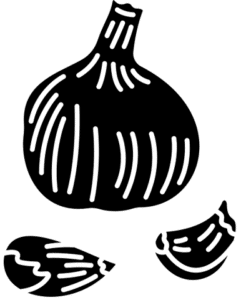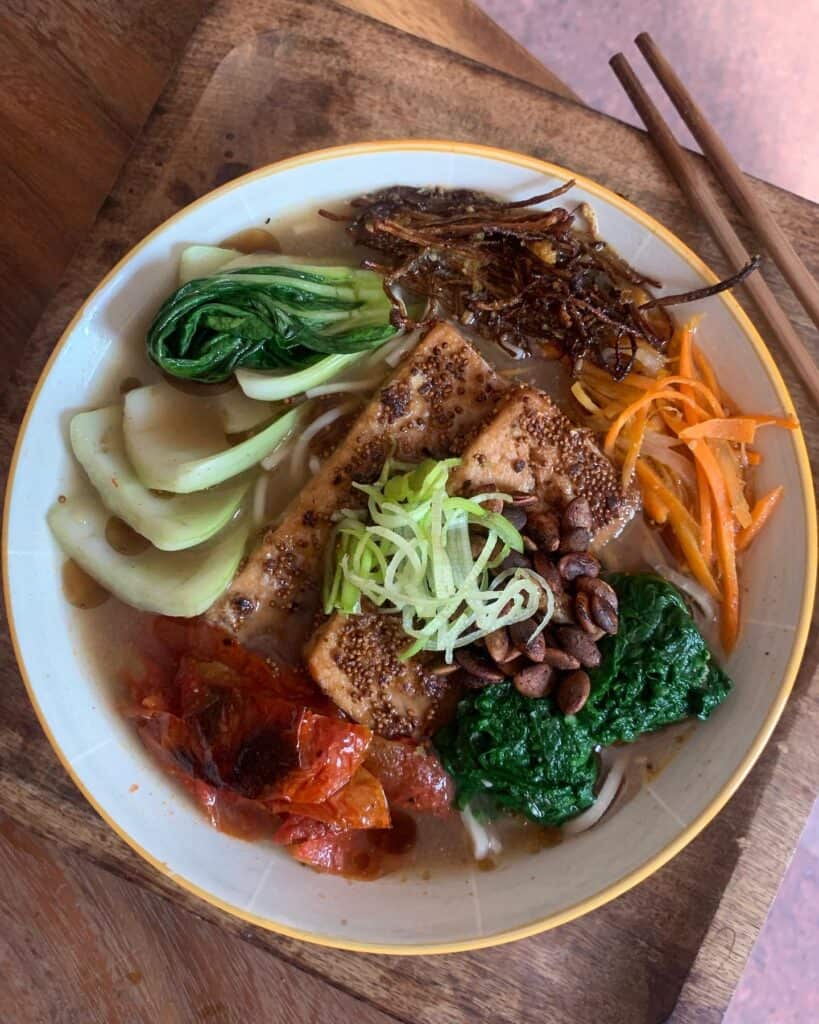
The challenge this week was to make a vegan ramen bowl without using miso. Every decent vegan recipe I could find online relied on miso. If you’re a vegan and you like ramen, I’m guessing you’re tired of eating variations on miso soup. I don’t have access to particularly great miso at the moment, so I thought I’d work on developing something without using miso.
Preparation
This bowl takes two days to make. 1 day for prep and then an afternoon for the pickup. If you can, I recommend letting the dashi sit for one week to let the flavor compound.
You must prepare the noodles, dashi, and taré the day before because they need a day to sit. The tofu needs to be marinated on the day otherwise, it gets too salty. Everything else you can prepare the day before or on the day.
Day before
Dashi reduction – Without miso, all the umami in this bowl came from mushrooms. I used 4 types of mushrooms. 2 parts button mushrooms, 1 part rehydrated shitake, 1 part king oyster, and 1 part brown oyster. I sauteed them over a low flame for about 4 hours. Every hour or so, when they’d dry up, I’ll add two tablespoons of mirin to keep everything moist.
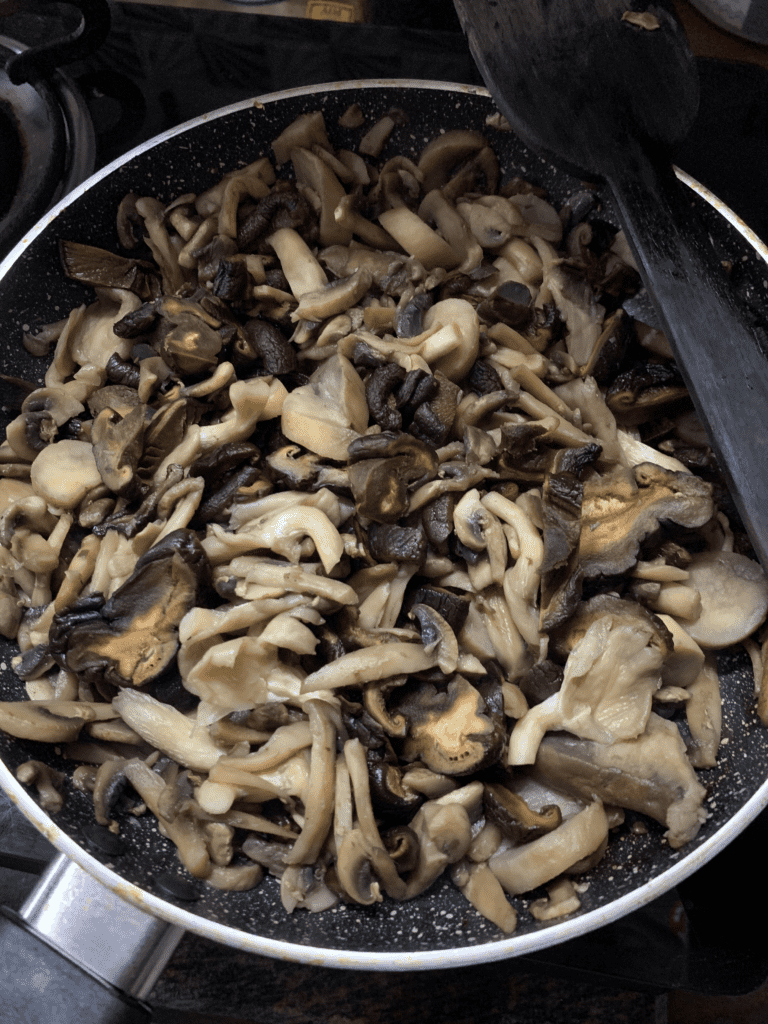
Once it’s all nice brown and smells utterly delicious, pop it all in a blender and add 1 tablespoon of umeboshi paste (pickled plum) for each 100g of mushrooms.
Let this sit overnight before you use it. Ideally, you want to let it sit in the fridge for a week. Something happens after about a week, and a whole new layer of flavor emerges.
Taré – I went with a subtle shio tare for this bowl. I wanted the umami from the mushroom to be center stage. I got this recipe from the way of ramen YouTube channel. Again I’d recommend letting it sit for a night for the flavors to come together.
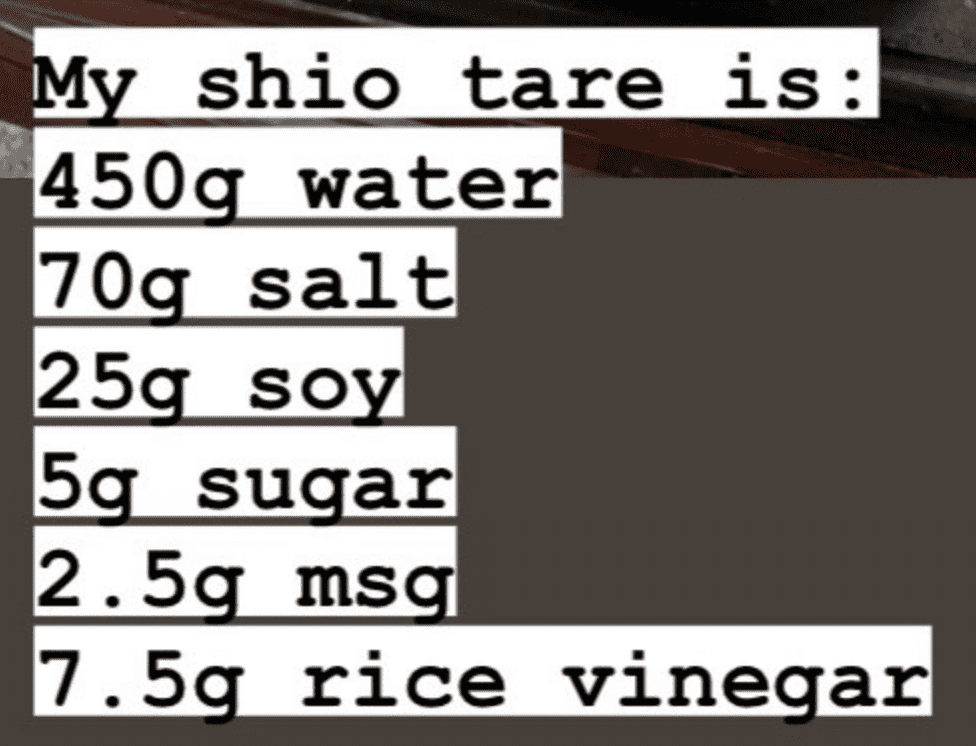
Noodles – I went for 35% hydration for this bowl. Medium-cut noodles.
If you’re making the noodles from scratch, they need to sleep in the fridge for a night to firm up.
This is a great starter video for noodles. It shows you how to make the kansui and roll the noodles out with a pasta maker.
If you’re in India, the best flour I’ve found so far for ramen is C-8615.
The rest of these elements you can either do on either day or the day before. I like to do them beforehand to eliminate confusion work around the pickup.
Enoki mushrooms – I spread enoki mushrooms out on a baking tray and then generously drizzled sunflower oil and nutritional yeast over the tray to cover all the mushrooms. Then roast everything in an oven at 250 for 10-15 minutes. This is the color I went for.
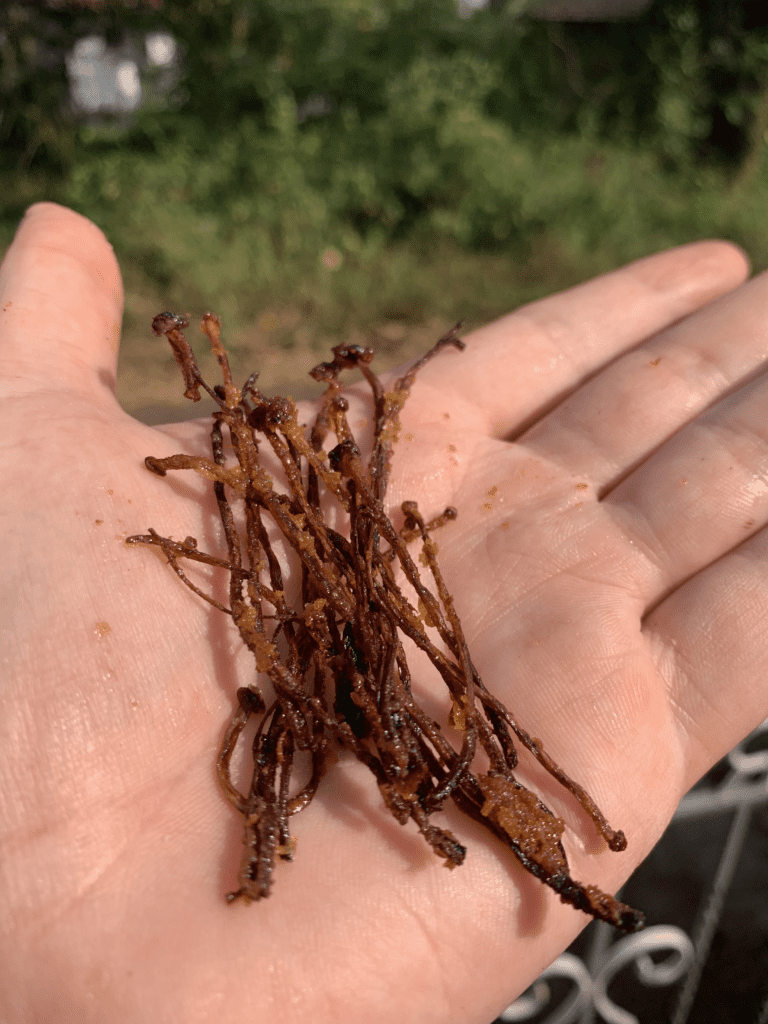
Slow roast tomatoes – I added these to the recipe. then I took them out. then I put them back in. The problem is that I don’t have access to great tomatoes. Crappy tomatoes added acidity to the bowl, which was not nice.
To remove the acidity, and blended sundried tomatoes, olive oil, and nutritional yeast to form a paste I basted the tomatoes before cooking them really slowly in the oven for about an hour and a half. taking them, out to flip them over about halfway through.
If you have access to nice tomatoes, you can probably get away with just roasting them with a drizzle of oil.
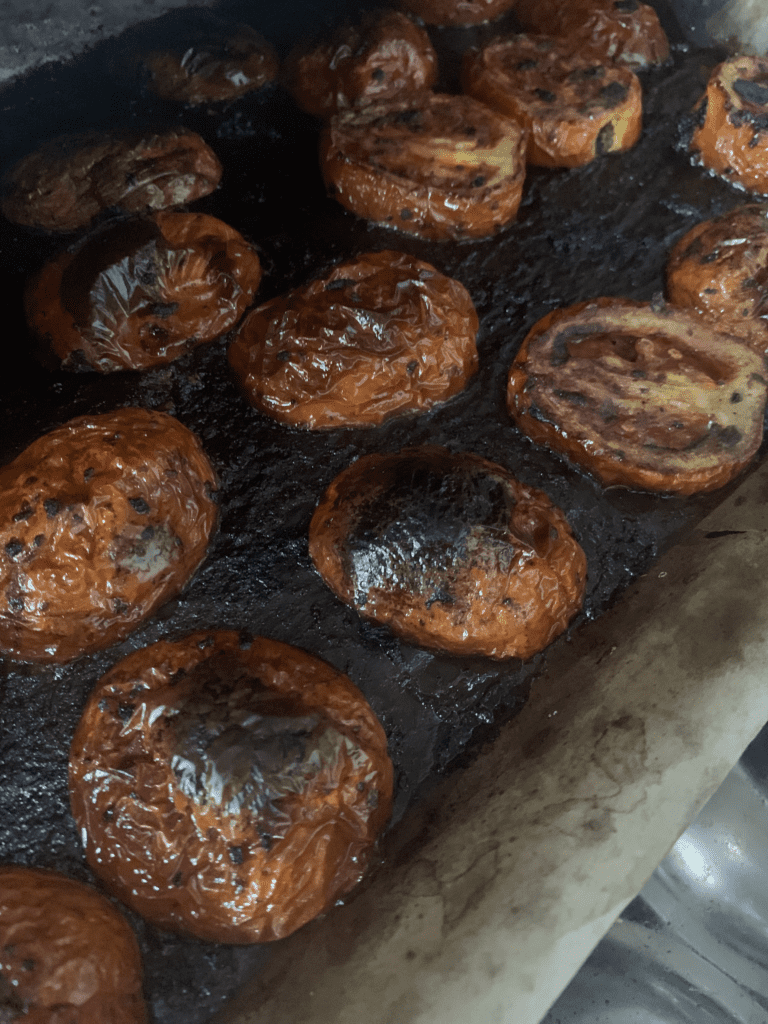
Soy-toasted pumpkin seeds – These are important components because the bowl gets a bit mushy without them. They add a much-needed crunch.
Slowly dry toast the pumpkin seeds in a pan, and then once golden, turn the heat up high and flash fry them in soy sauce to form an umami coat around each seed.

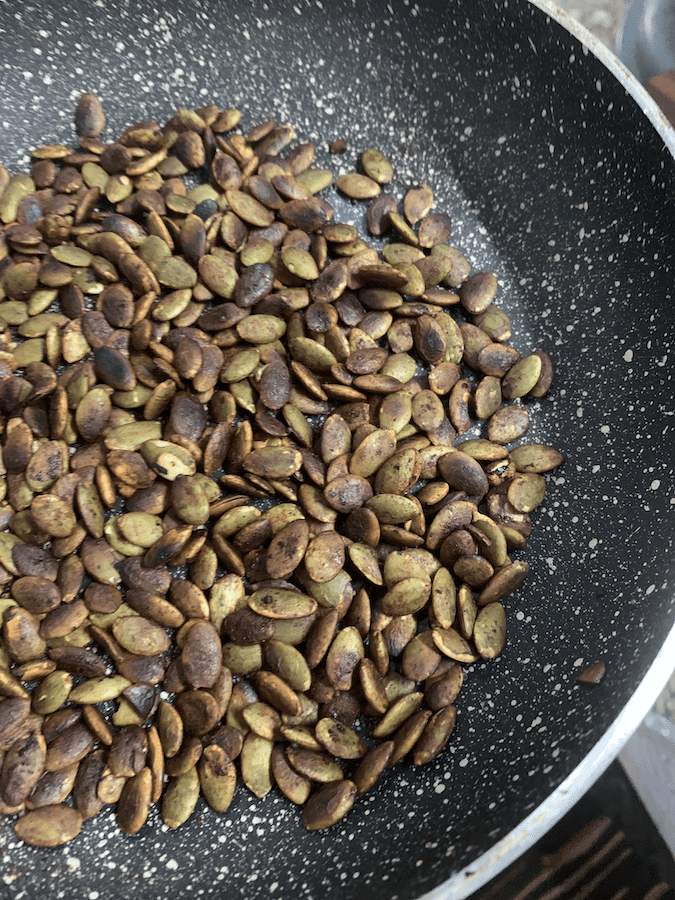
Carrots and sesame – Thinly slice carrots and raddish in a 4:1 ratio. Then slice the slices so that you end up with finely julienned slivers. Throw everything in a pan with a little oil and flash fry at high heat for one or two minutes. Then add a handful of sesame seeds to the mix, and you’re done.
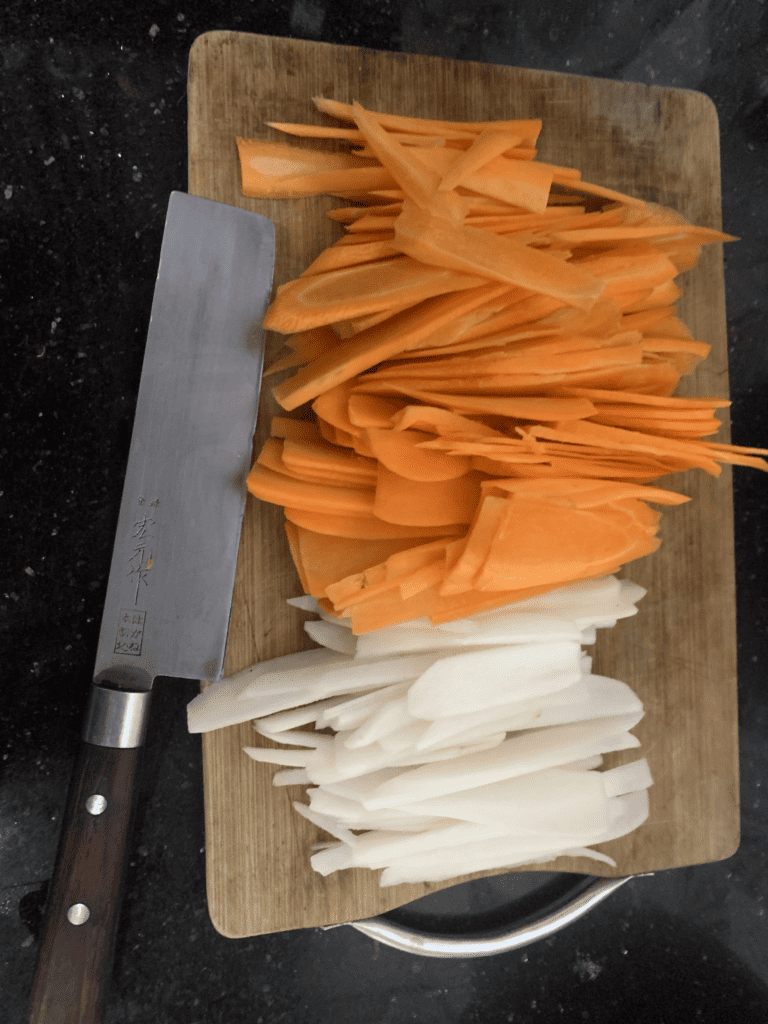
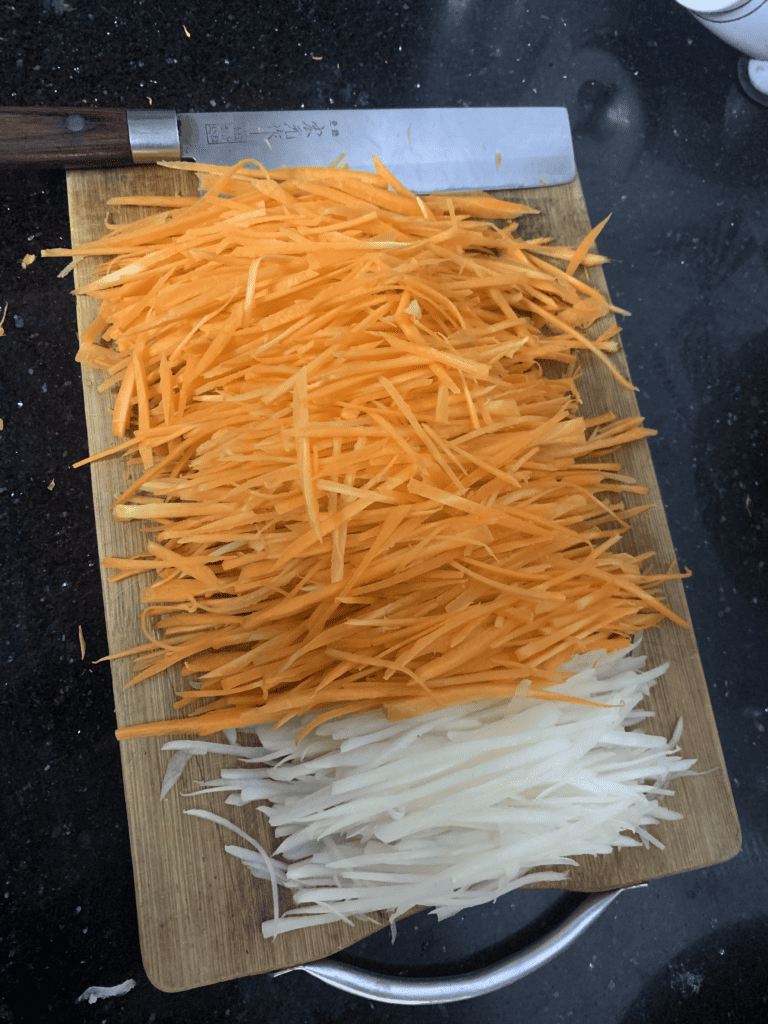
Scorched garlic oil – This delicious concoction is critical for the aroma of the bowl. Scorching garlic feels wrong and goes against everything you’ve learned to do in a kitchen. But you have to be brave and burn the shit out of your garlic.
The key is to take the garlic out of your boiling oil every 15 or 20 minutes so that you have different layers of burnt garlic. Then blitz everything in a grinder with sesame oil, and you’re done.
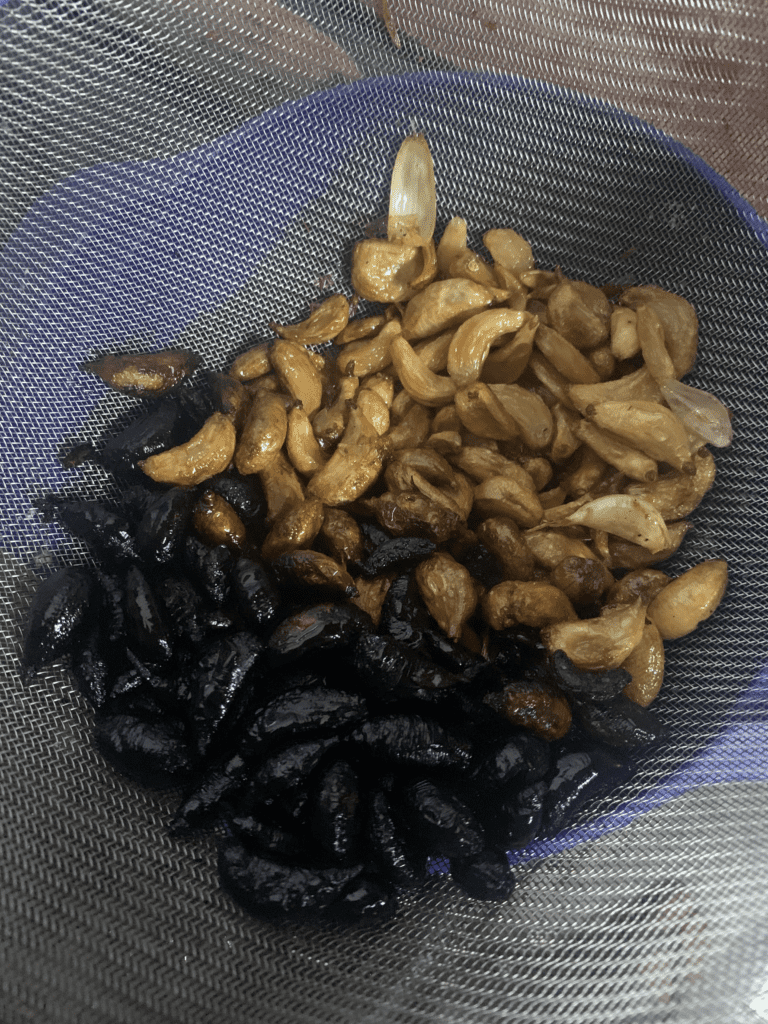
Pick up on the day
Marmite marinated tofu – You want to put the tofu in to marinate 2 hours before cook time. 1/2 inch thick cuts of tofu and the marinade is:
- 2 parts soy sauce
- 2 parts mirin
- 1 rice wine vinegar
- 1 part minced ginger
- 1 part finely chopped garlic
- 1 part sunflower oil
- 1 part marmite
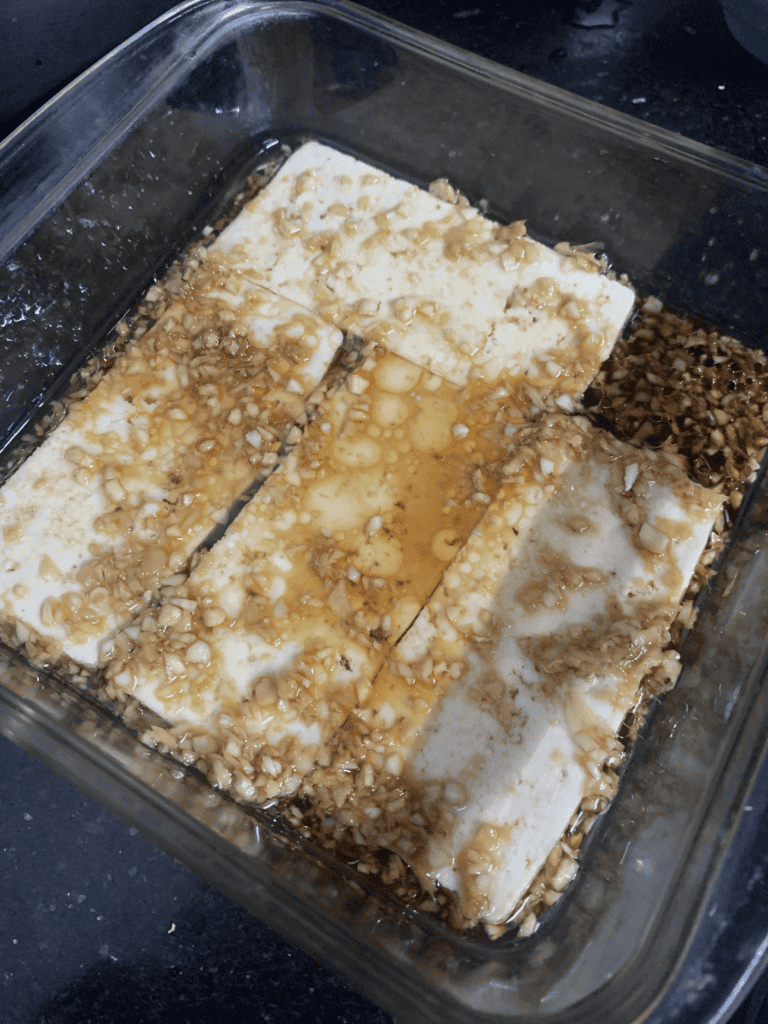
Yes, that’s right, marmite. And, yes, marmite is vegan. It adds glutamate to the marinade without over-salting it. And the recipe is on the brink of being too salty, which is why I don’t recommend you marinate it for more than 2 hours.
Once your tofu is marinated, you want to mix together 2 parts cornstarch with 1 part perilla seeds. If perilla is too exotic for your local grocery, then black sesame will do. Perilla adds a much nicer crackle, though. Coat the tofu is your perilla starch and pan fry.
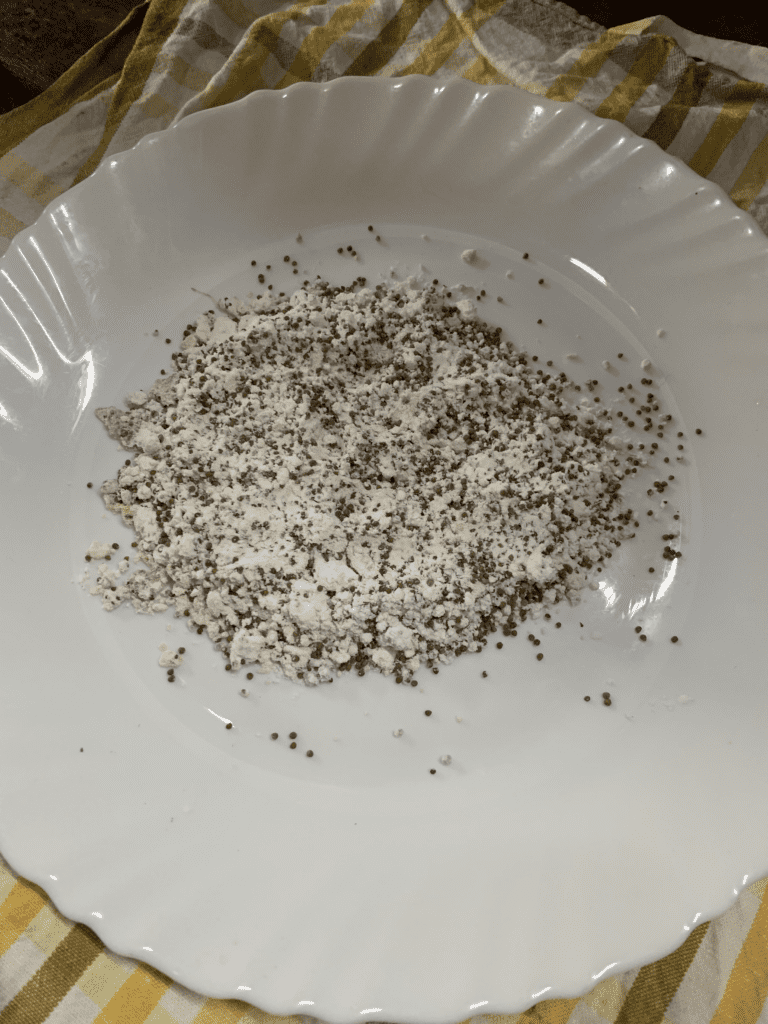
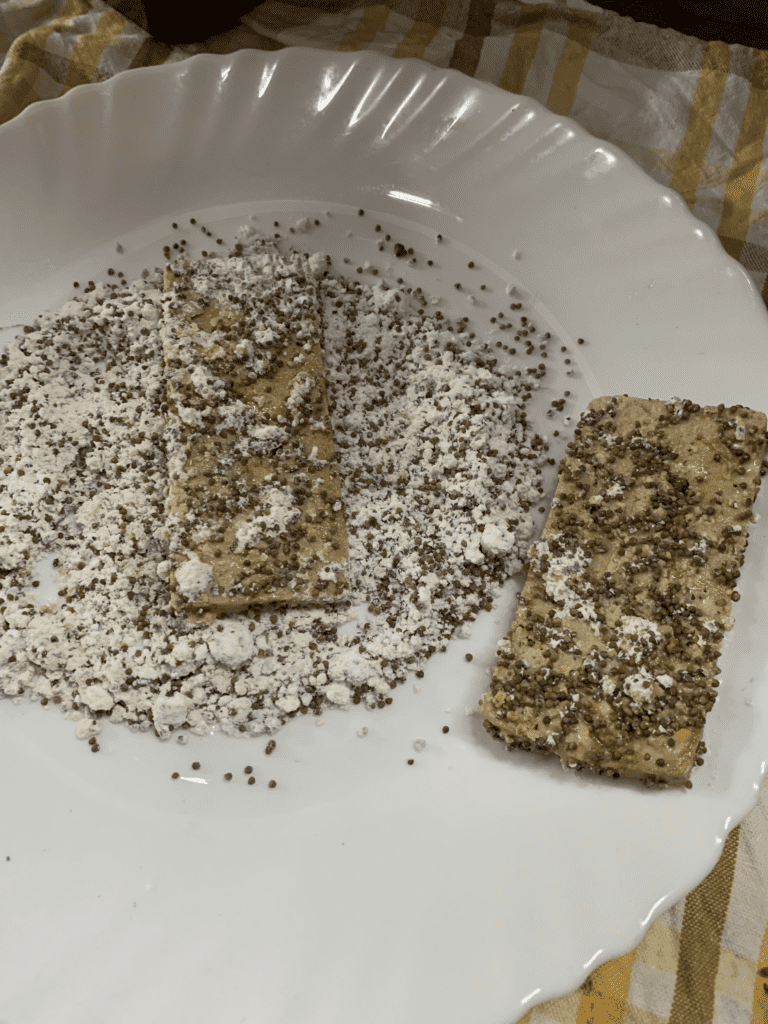
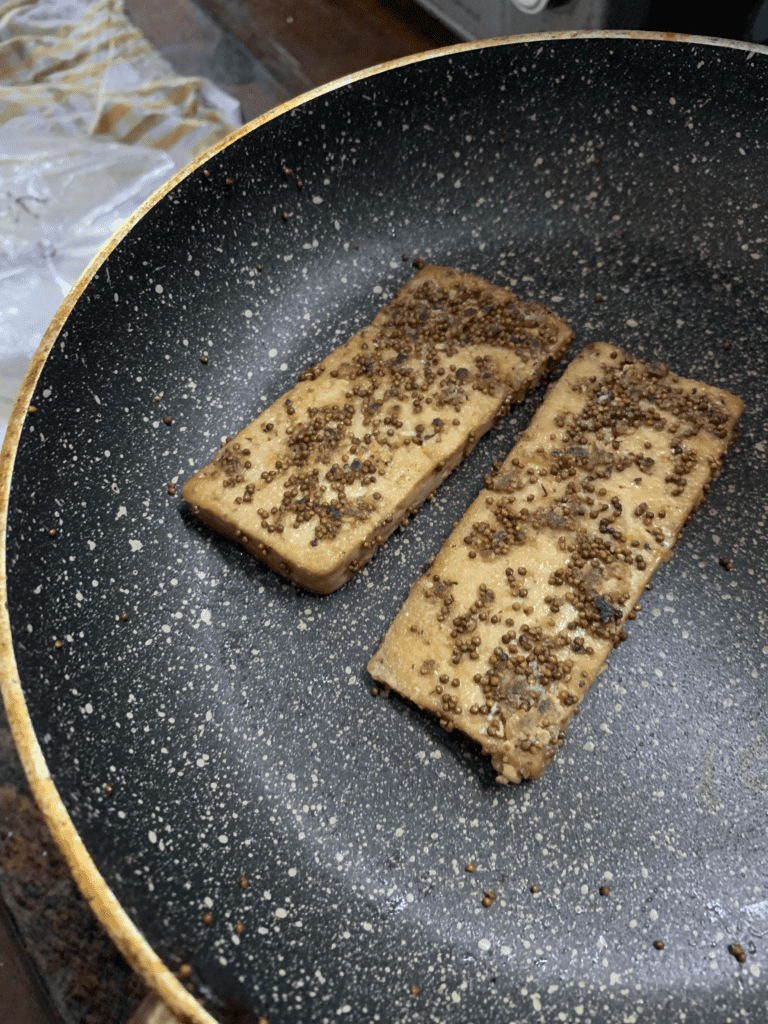
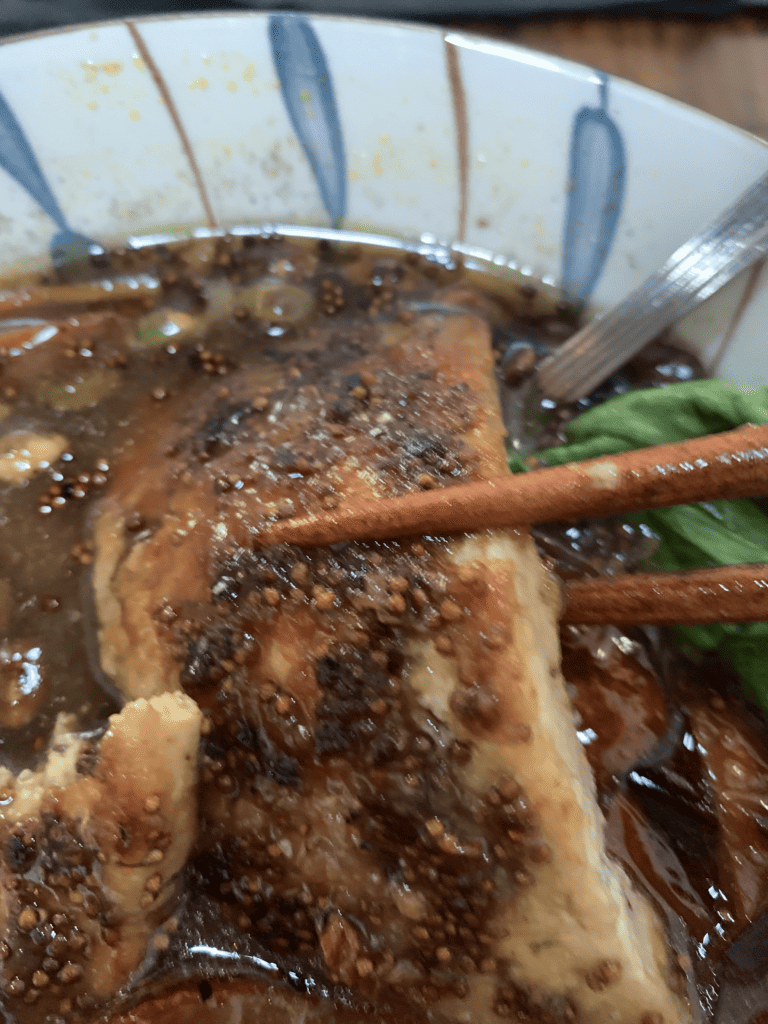
The last three components are some Pok Choi leaves, some blanched spinach (wring all the water out so that it doesn’t dilute the soup and some finely chopped white of a leek stem.
If you’ve been following along, your mise-en-place should now have all the following toppings.
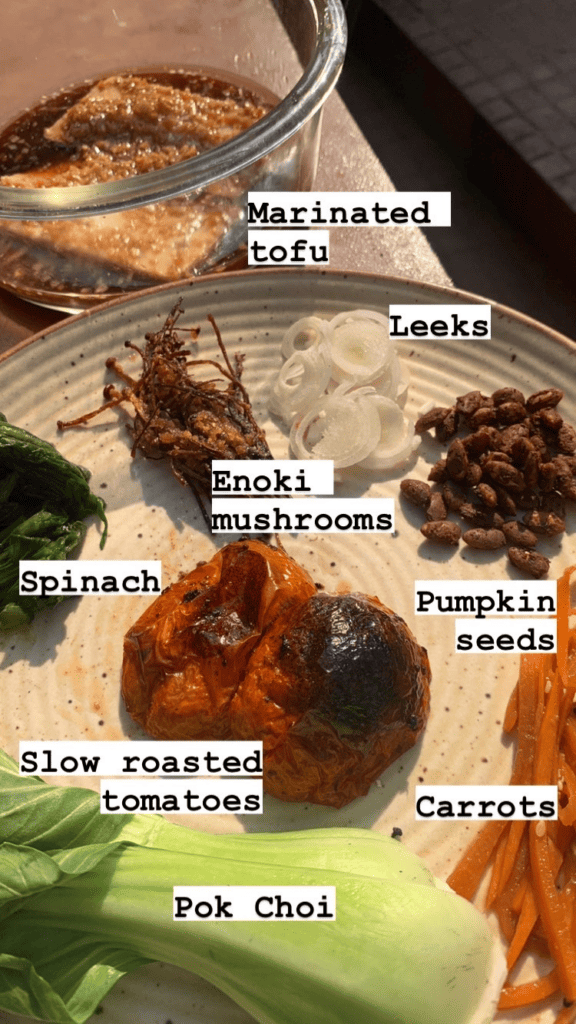
Assembly
- Heat water for the noodle and, in a separate saucepan 400ml of water for each bowl of ramen. On top of the noodle water add the Pok Choi in a sieve to steam during preparation.
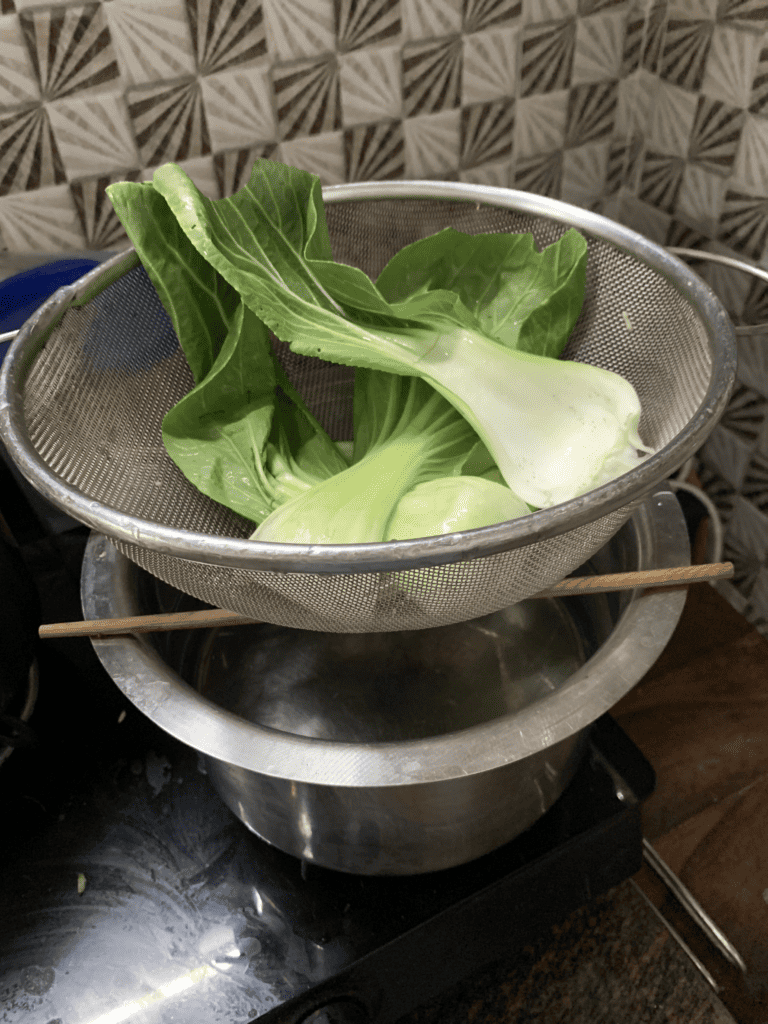
- Use some of the heated water to rinse out your ramen bowl so it’s nice and warm. Then add 36g of your shio tare to the warm bowl.
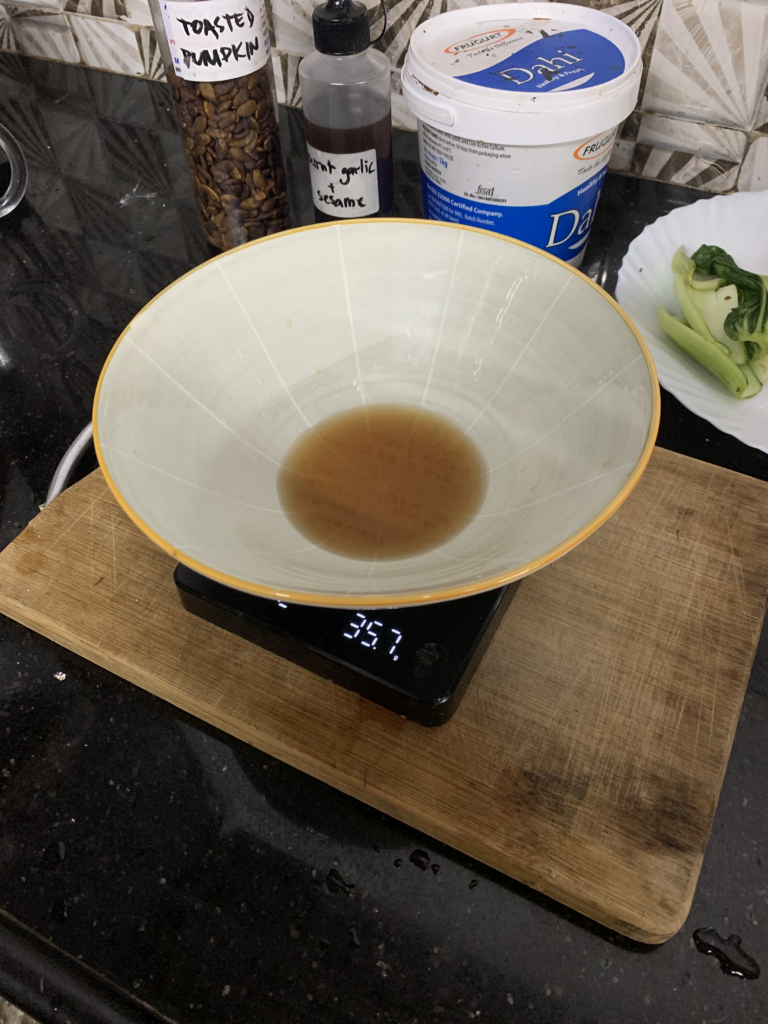
- Then add 3 tablespoons of your dashi reduction to the bowl.
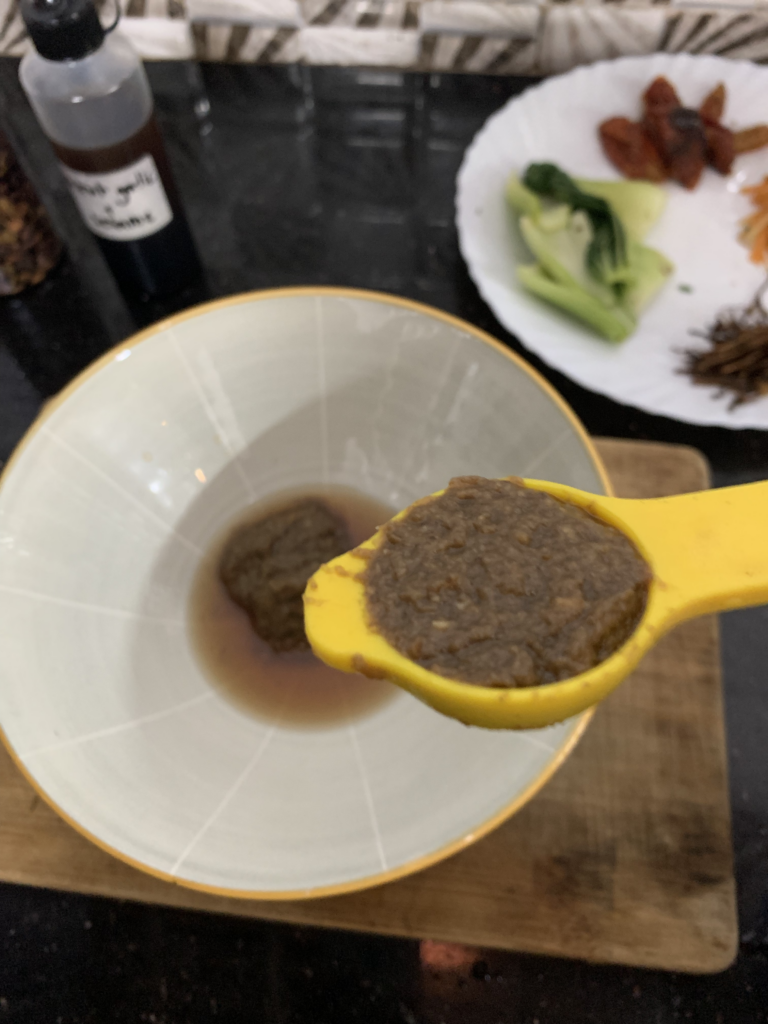
- Once the water comes to a boil, throw your noodles in and cook for 1 minute (if fresh) or as directed on the packet (if not).
- While the noodles are cooking, add 400 ml of boiling water to your bowl t create your broth from the tare and reduction.
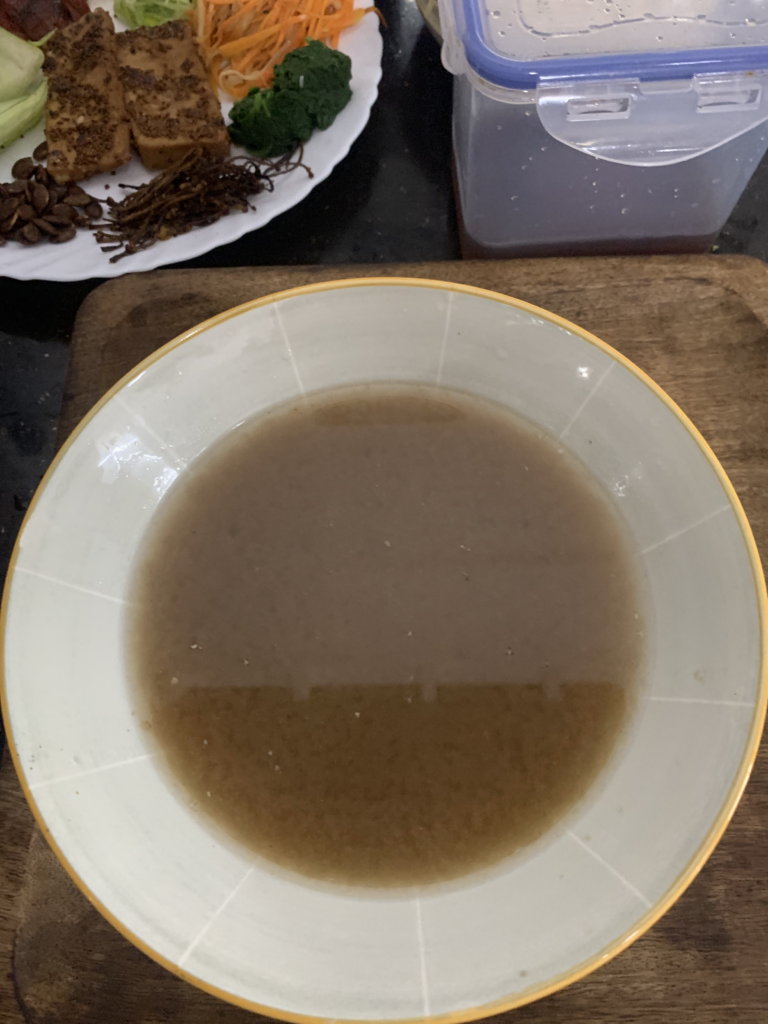
- Strain your noodles and add them to the broth right away. Ideally, they should continue to cook while in your ramen bowl.
- decorate the bowl with your toppings, and then add a teaspoon of scorched garlic oil for the aroma, and it’s ready.
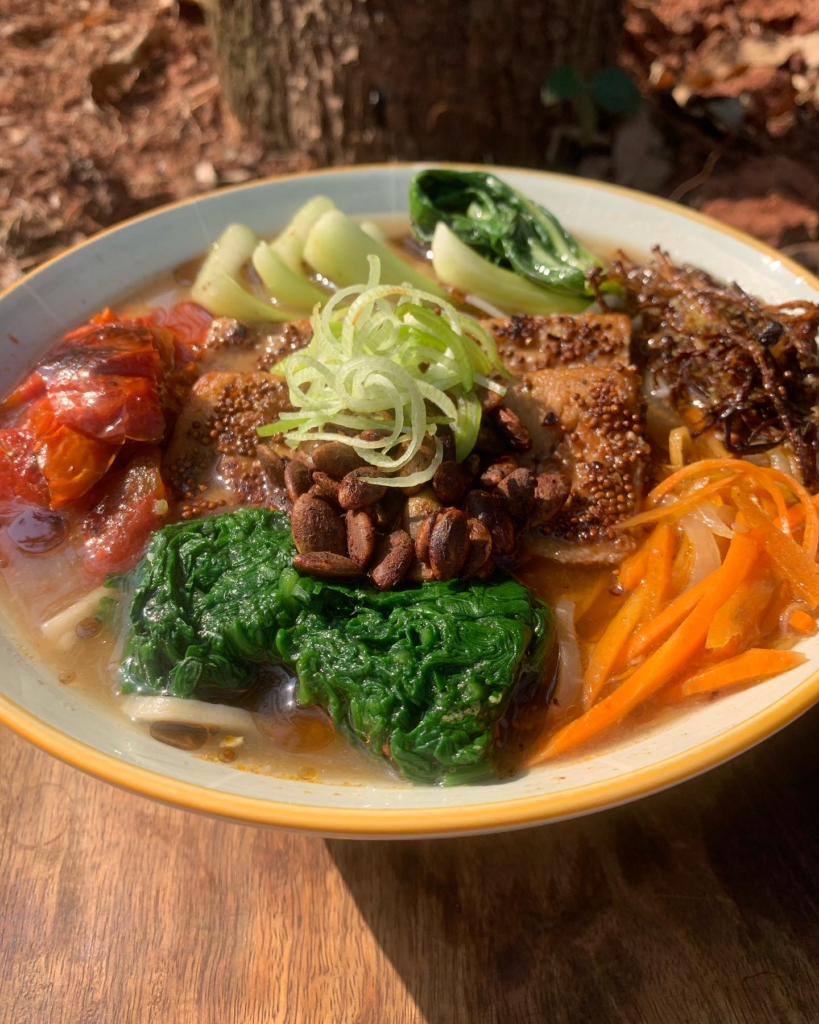
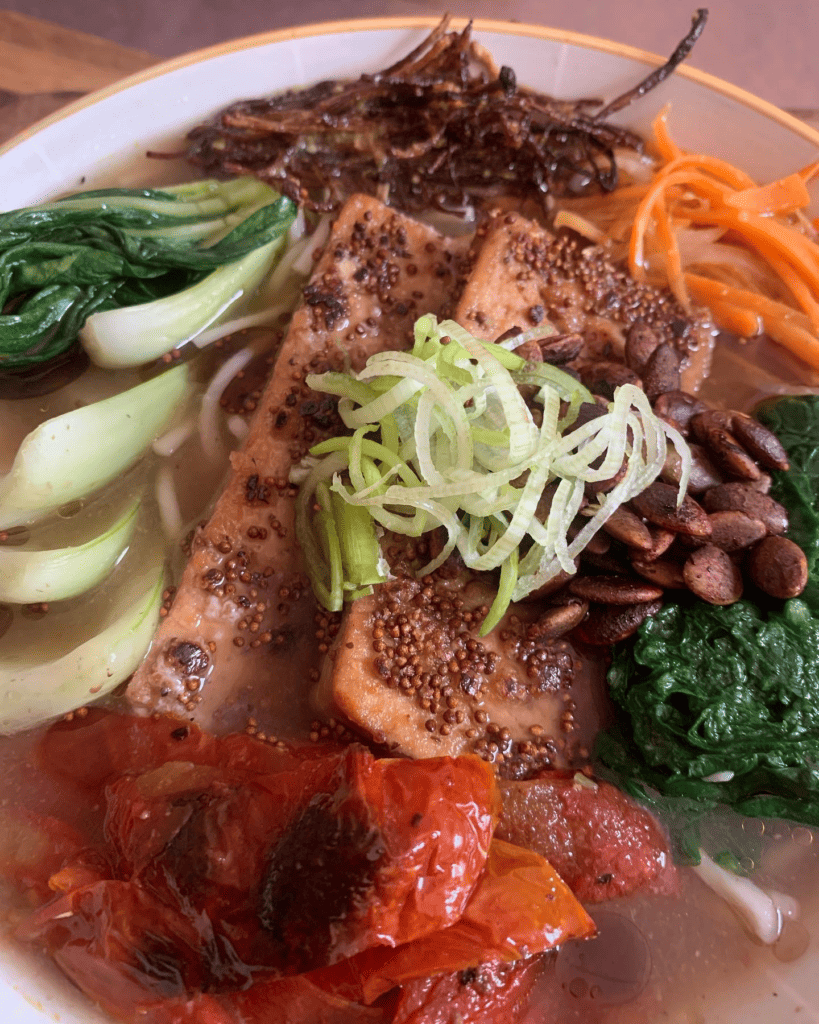
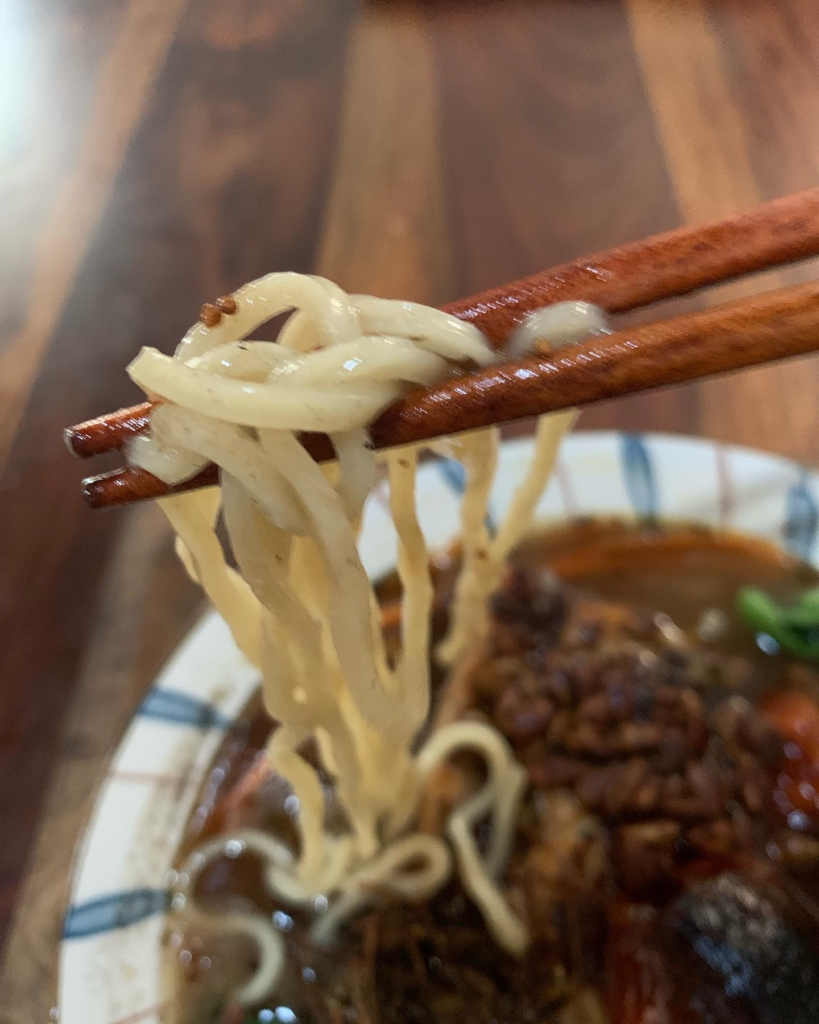
…and here’s a little sneak peek of my pantry at the moment.
Lessons learned…
What worked
The flavor was solid – 5 types of mushrooms and 2 types of yeast. ‘Mushrooms’ is the answer to where did the flavor come from without miso. That said, it didn’t feel like I went overboard with mushroom-y flavor. I also didn’t want to use a bunch of mushrooms as toppings. Tried that in some earlier bowls, and, while it is nice, I was more interested in extracting the mushroom brothiness to create a deep wholesome, flavor for this recipe.
The texture was on point – Crunch from the seed, crackle from the tofu, the stalks of pok choi, a membranous texture from the enoki, firm tofu, and soft tomatoes in the middle. It’s all there.
What could be improved
Tofu no hero – I wanted to make the tofu feel more like a piece of pork chashu. I tried adding honey (not vegan), tried caramelizing different kinds of sugars, I tried baking it…nothing. I’m happy with pan fry crackle, but it didn’t take center stage. There was a lot to hide behind in this bowl, and if I were to take another run at this recipe, I prefer to have one topping stand out as the front man for the bowl. Here we had more of an ambiance of ingredients. Perhaps I’ll look into agedashi tofu next time.
Spice – This bowl could probably do with some kick. There were no spicy components. This is definitely something I would like to experiment with if I come back to this bowl in the future.
